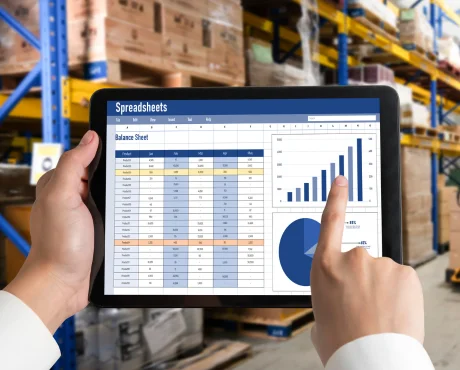In today’s business world, the power has shifted from the hands of buyers to suppliers, leaving businesses with fewer choices and higher prices. As suppliers grow stronger, traditional tactics for negotiation aren’t enough to get the deals you want anymore. It’s time to rethink and adopt new procurement negotiation strategies.
In this post, we’ll break down some simple, effective strategies for negotiation in purchasing that will help you grab better deals, reduce costs, and build healthy relationships with your suppliers.
9 Best Strategies for Successful Procurement Negotiation

1. Preparation is Everything
Always do your homework before entering the market and show your purchase negotiation skills. Preparation also shows that you are serious and confident. So start with
- Understanding what others are paying for the same product or service. This helps you gauge if you’re getting a fair deal.
- Learning about their business, their competitors, and any potential weaknesses.
- Knowing what you can spend, how much you need, and the most important terms.
- Having a couple of alternative suppliers in mind just in case things don’t go with the plan.
When you come to the table prepared, you set yourself up for success. It gives you confidence and makes it harder for suppliers to take advantage of any knowledge gaps you might have.
2. Build Real Relationships
Negotiation in purchasing isn’t just about the exchange of products and money. They’re about partnerships. When you build trust with your supplier, you get better deals, priority service, and even inside information on market trends. Go with these tactics to build real relationships.
- Be Transparent: Be open and honest about your needs, challenges, and pricing expectations.
- Pay on Time: It sounds simple, but paying on time goes a long way in establishing goodwill.
- Engage Regularly: It’s good to have a professional conversation, but engaging in natural conversation shows that you care more than just making a deal with them.
When your supplier sees you as a valued, reliable partner, they’ll likely offer you better terms.
3. Know What You Want (Before You Sit Down)

Before you start negotiating, ask yourself: what’s most important to you? Do you need a cheap deal, or is quality more important? Does flexible payment sound good, or do you need faster delivery?
Having a clear list of goals helps mean no regret after securing the deal. It’ll keep you from getting sidetracked by things that don’t matter as much to your business.
Also Read: How Cost Transparency Strengthens Your Company’s Negotiating Power
4. Start Strong Without Being Rude
The first words you say set the tone for the entire negotiation. So, start strong, but keep it friendly. Instead of saying, “We need a discount,” try saying: “We’re interested in a long-term partnership and would like to explore ways to make the pricing more competitive.” Be confident without sounding like you’re attacking them.
5. Don’t Be Afraid of Silence
It may feel uncomfortable, but silence is one of the best negotiation skills for purchasing professionals. After making an offer or asking for a better deal, give the supplier space to respond. People often rush to fill the silence, but the supplier sometimes starts making concessions to break the awkward pause.
For example, after asking, “Can you offer a better price on bulk orders?” don’t rush to get immediate replies. Wait a bit, and you might be surprised by how much more they’re willing to offer.
6. Use Competition to Your Advantage
Suppliers know better that other suppliers are also waiting to grab the deal. So, let them know you have other options (but don’t bluff about it). When they know they’re in competition, they might be more willing to give you a better deal.
You could say, “We’ve received some offers with better terms. Is there any way you can match or beat those?” Or, “We’re looking at a few suppliers right now, and pricing is a key factor in our decision.” This puts gentle pressure on the supplier without making it feel like a threat.
7. Bundle Your Purchases

Instead of negotiating one product at a time, try bundling several products or services together. Suppliers offer discounts when they see a larger volume of business coming their way.
For example, instead of just negotiating the price of a single item, ask if they can give you a package deal for multiple items. Or, if you need a service like maintenance, ask for a bundled price that includes both the product and service. Bundling can give you more leverage, helping you secure better terms.
8. Don’t Force a Purchase
Sometimes, the best negotiation tactic is not securing a deal but walking away. If you’re too dependent on a single supplier, they’ll know they’ve got the upper hand. But if they realize you have other options, they may be more flexible.
If the terms aren’t right, don’t be afraid to politely say: “Thanks for your time, but these terms don’t meet our needs. We may need to look elsewhere.” Or, “We’d love to work with you, but we need more flexibility on pricing to make this work.” Suppliers may return with a better offer when they know you’re willing to walk away.
9. Negotiate Beyond Price
Price isn’t everything. You can also negotiate other factors that can make a huge difference for your business, like:
- Payment Terms: Can you extend the payment period to improve your cash flow?
- Delivery Schedules: Faster deliveries could help you avoid stock shortages.
- Warranty or Support: A longer warranty or better customer support can save you money in the long run.
- Bulk Discounts: Commit to future orders in exchange for a better price.
Sometimes, these non-price concessions can be just as valuable (if not more) than a simple price cut.
Also Read: How Can a Strong Sourcing Strategy Boost Efficiency?
Do This If Everything Else Fails

When traditional procurement negotiation strategies don’t work and you can’t find alternatives, one last strategy is to create new suppliers. This could mean finding new players in the market to innovate and meet your needs in new ways.
While it’s a bit riskier, especially if suppliers are very well-settled in the market, working together to innovate can help both sides win. This might involve developing new products, changing processes to reduce costs, or introducing new tech that makes your supply chain more efficient.
While it’s not a move to take lightly, this approach could reshape your entire supply strategy and give you more control.
Final Thoughts
Negotiating with suppliers is a skill every purchasing professional needs. It’s not just about getting the lowest price-building relationships, understanding your needs, and finding solutions for both sides.
By being prepared, focusing on long-term partnerships, and using these smart strategies for supplier cost reduction, you can secure better deals and turn supplier negotiations into an advantage for your business. Remember, successful negotiations are all about finding a win-win for everyone involved.





